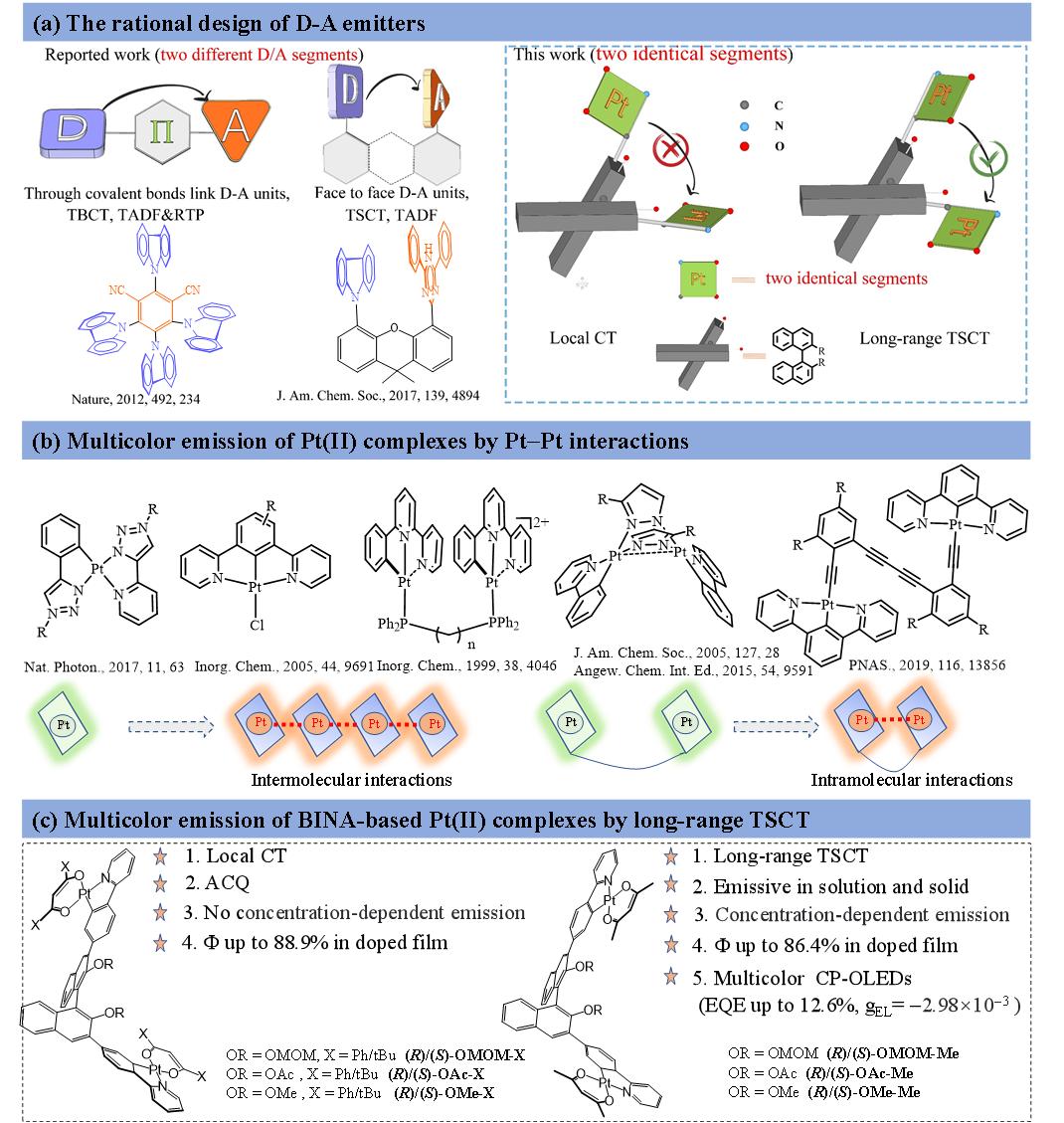轴手性联萘二核铂(II)配合物的多彩圆偏振发光
Multicolor circularly polarized phosphorescence of axially chiral binuclear platinum(II) complexes
Song JT,* Zeng R, Xiao H, Ni HL, Xu Z-X,* Xiang HF*
SCIENCE CHINA Chemistry (2024) DOI:10.1007/s11426-024-2124-3
https://www.sciengine.com/SCC/doi/10.1007/s11426-024-2124-3
D-A charge transfer, including through-bond charge transfer and through-space charge transfer between two different electron donor (D) and electron acceptor (A), is a fundamental and powerful tool to tune the optical properties of organic dyes. Herein, we demonstrate a unique strategy to tune phosphorescence and circularly polarized luminescence properties of axially chiral binuclear Pt(II) complexes through long-range charge transfer, even although these molecules have two totally identical segments on either side of the chiral core. The presence of axial chirality would break not only the symmetry of molecular structure and π-conjugation system but also the symmetry of charge distribution for long-range charge transfer. These binaphthyl-based Pt(II) complexes bearing coordinated atoms far away from chiral axis exhibit no Pt–Pt interactions but colorful concentration-dependent phosphorescence with quantum yield up to 86.4% and could be applied as emitters in highly efficient solution-processed organic light-emitting diodes to achieve luminance, luminance efficiency, power efficiency, external quantum efficiency, and asymmetry factor up to 8.94 × 103 cd m−2, 41.9 cd A−1, 18.8 lm W−1, 12.6% and 2.98 × 10−3, respectively. Therefore, the present work affords a new and simple way to utilize the inherently asymmetric advantage of chirality for the design of D-A-based organic dyes.



转载本文请联系原作者获取授权,同时请注明本文来自向海峰科学网博客。
链接地址:https://wap.sciencenet.cn/blog-581887-1436645.html?mobile=1
收藏


